Join More Than 50,000+ Subscribers and get latest camera news and rumors
NEW CAMERA VIDEOS ON YOUTUBE
Download Our Android App
|
By admin, on June 18th, 2024
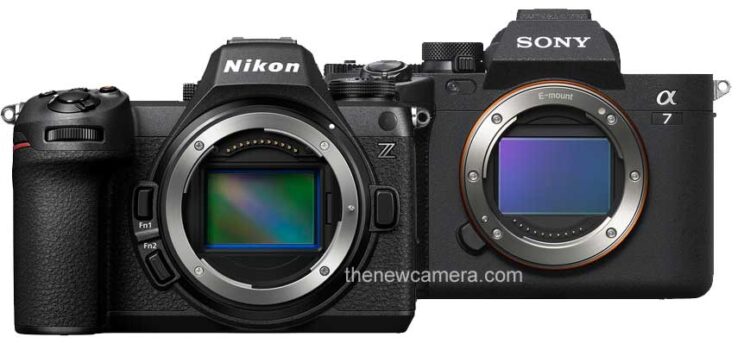
Let’s the comparison of the Nikon Z6 III camera with the Sony A7 IV starting from the design part we do have some major differences let’s find out.
The Sony A7 IV camera uses a 3.69 million-dot electronic viewfinder whereas in the latest Nikon Z6 Mark 3 camera, Nikon has introduced a flagship-level electronic viewfinder with 5.76 million resolution. Not only that, the refresh rate of this particular viewfinder is the best in its class with 120 frames per second as well as the EVF has 4000 nits of brightness units. That indicates you will experience one of the best electronic viewfinders ever introduced in a camera.
Buy Nikon Z6 III from B&H Store | amazon.com
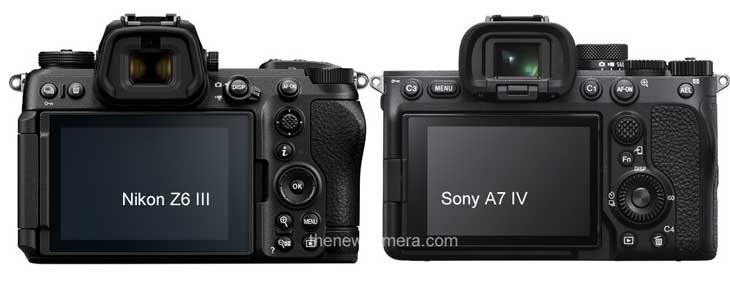
Design and Build
Electronic Viewfinder (EVF)
- Sony A7 IV: 3.69 million-dot resolution.
- Nikon Z6 Mark 3: Flagship-level EVF with a 5.76 million-dot resolution, 120 frames per second refresh rate, and 4000 nits brightness. This provides a superior viewing experience.
Now the second major advantage in the design part of the Nikon Z6 Mark 3 camera we have is the introduction of a full-size HDMI port, so that’s a really very usable tool for professional cinematographers as well as photographers. For those who work in the studio and use their camera in their workflow HDMI cable this is a highly usable upgrade.
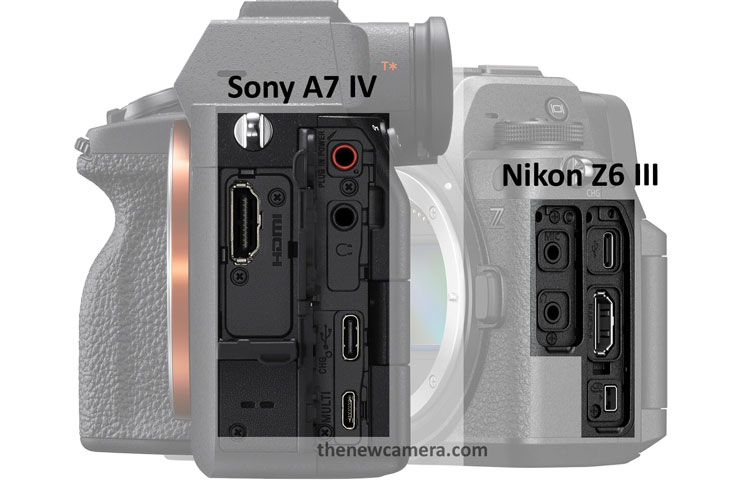
HDMI Port
- Nikon Z6 Mark 3: Features a full-size HDMI port, as well as Sony A7 IV camera, features Full Size HDMI port
Apart from these two features, the rest of the force in both the camera is almost similar. Even if we compare the display screen, the Nikon Z6 Mark 3 camera vari-angle display screen is slightly larger by 2 inches compared to the Sony A7 IV camera. Resolution-wise, the Sony A7 IV camera uses a 1.4 million-dot display unit whereas Z6 Mark 3 camera uses 2.1 million dots display unit, so even though if you compare the electronic viewfinder or the vari-angle display screen in both of the scenarios Z6 Mark 3 camera wins.
Dual vs Triple Card Slot – No Backup option in Nikon Z6 III
The Sony A7 IV camera carries 3 card slots now why do they have to put 3 different card slots in a single camera says there is no connection between a CF Express Type A card slot and an SD card slot(s), so they have to put two different sets of UHS-II SD card slot and single CF Express Type A card slot at the Sony A7 IV camera so that if you want to create a backup card then you can utilize the two different UHS-II SD card slots in a camera like you use them from DSLR time as a backup card or once the card gets overflow then the camera automatically stores in a different (SD) card so you have all the options available as you generally used the two different card slots in any other camera Pro DSLR Camera, A7 IC also has an extra CF Express to record 4K videos up to 30 frames per second without getting the camera overheated.
The biggest issue with the Nikon Z6 Mark 3 cameras is that you only have two different card slots which act as a single card slot since one is a UHS-II SD card slot and the other is a CF Express Type B card slot now none of these cards are connected so there is no way that you can create a backup card.
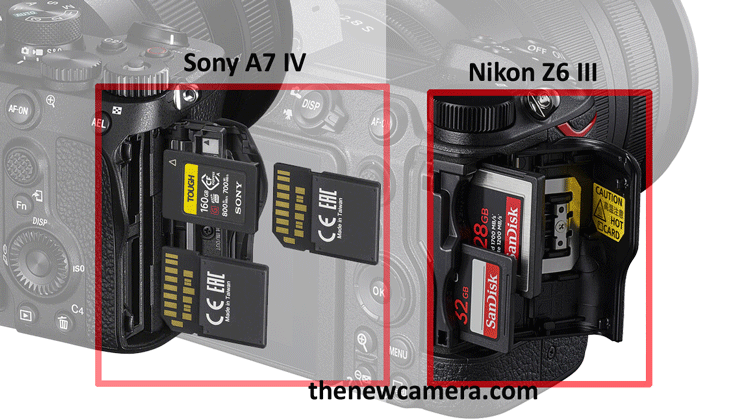
Display Screen
- Sony A7 IV: 1.4 million-dot display unit.
- Nikon Z6 Mark 3: Vari-angle display screen with 2.1 million dots, offering a clearer and larger display.
Now let’s talk about one of the biggest advantages of the Sony A7 IV camera. The Sony A7 IV camera’s battery life is twice as good as in the Z6 Mark 3. With the help of A7 IV you can capture approximately 600 shots and in Z6 Mark 3 with EN-EL 15c battery you’re limited to 380 shots, so approximately with the A7 IV camera, you are getting 220 plus shots in a single charge.
Battery Life
- Sony A7 IV: Approximately 600 shots per charge. That’s an awesome backup, just like DSLR time when u charge and forget
- Nikon Z6 Mark 3: Approximately 380 shots per charge with the EN-EL15c battery. The Sony A7 IV offers better battery life, providing around 220 more shots per charge.
Now it’s time to compare the core specifications of both cameras.
Core Specifications Difference
Sensor and Performance
- Nikon Z6 Mark 3: Newly developed 24.5MP Partially-Stacked CMOS Sensor
- Sony A7 IV: 33MP Full-Frame Exmor R CMOS BSI Sensor (Non Stacked)
Let’s start with the sensor in the latest Z6 Mark 3 camera. We have recently developed partially stacked CMOS sensor with the help of new stacked sensor the camera is able to grab continuous shooting speed up to 120 frames per second in DX mode as well as in full resolution JPEG mode you are able to capture up to 60 frames per second. At the very same time if we calculate the readout speed of the sensor then it ranges between 6.4 milliseconds to 9.4 milliseconds, so overall the readout speed of Nikon Z6 Mark 3 camera sensor is exceptionally well and you will not notice any rolling shutter effect while capturing high frame rate images in your camera. When compared to the Sony A7 IV the continuous shooting speed of the camera is limited to 10 frames per second, which is completely unethical to have such a kind of continuous shooting speed in 2024 in a camera of $2000 price range.
Nikon Z6 Mark III and the Sony A7 IV cameras: comparison of the sensor readout speeds
| Feature |
Nikon Z6 Mark 3 |
Sony A7 IV |
| Sensor Type |
Partially Stacked CMOS |
CMOS |
| Continuous Shooting Speed (DX Mode) |
Up to 120 fps |
Not specified |
| Continuous Shooting Speed (Full Resolution JPEG Mode) |
Up to 60 fps |
10 fps |
| Sensor Readout Speed |
6.4 milliseconds to 9.4 milliseconds |
26.8 milliseconds |
| Rolling Shutter Effect |
Minimal due to fast readout |
More noticeable due to slower readout |
ISO Range
- Nikon Z6 Mark 3: Standard ISO range from 100 to 64,000, expandable from 50 to 204,800. 1 Stop advantage over A7 IV standard ISO range
- Sony A7 IV: Standard ISO range from 100 to 51,200, expandable from 50 to 204,800.
Not only speed when Nikon Z6 Mark 3 camera excels in low light performance and you get extra stops of ISO in this standard ISO zone. The standard ISO range of Nikon Z6 Mark 3 camera starts from 100 to 64,000 and expandable ISO range starts from 50 to 204,800 whereas in Sony A7 IV camera we have standard ISO range that starts from 100 and goes up to 51,200. The expandable ISO range is 50 to 204,800.
| Feature |
Nikon Z6 Mark 3 |
Sony A7 IV |
| Standard ISO Range |
100 to 64,000 |
100 to 51,200 |
| Expandable ISO Range |
50 to 204,800 |
50 to 204,800 |
| Low Light Performance |
Extra stops of ISO in standard range, excels in low light |
Good low light performance, but lower standard ISO range |
Base ISO Test
The resolution advantage is associated with the Sony A7 IV camera. With the Sony A7 IV camera, you can capture 33 megapixel images whereas the Z6 Mark 3 camera is limited to 24 megapixels. If you just compare the 24-megapixel sensor of the Nikon Z6 camera with the Sony A7 IV you can see that the Sony A7 IV camera with the help of a 33-megapixel sensor can extract a little bit more detail in the image when compared to a 24 MP FX-format full-frame sensor of Nikon.
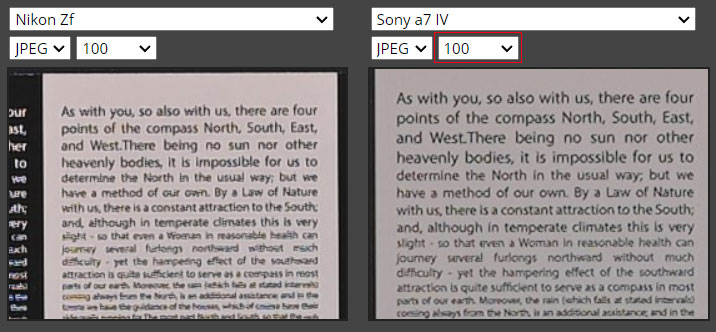
The clear advantage of a Sony A7 IV camera is that you can extract a bit more detail from a given scene, but at the very same time with the Nikon Z6 Mark 3 camera, we do have a higher resolution pixel shift mode.
PIXEL SHIFT Mode in Nikon Z6 Mark III Camera
- Sony A7 IV: 33 megapixels, providing a bit more details
- Nikon Z6 Mark 3: 24 megapixels, but features a pixel shift mode allowing for 96-megapixel images.
With the help of pixel shift mode with Nikon Z6 Mark 3 camera can capture 96 megapixels of image, but we do have a few drawbacks of pixel shift mode. The number one drawback is that the subject has to be still not moving at the very same time you have to place your camera on a tripod and overall the camera is not able to stitch the multiple-shot images you have to take out all the images, put them in a software and it will automatically stitch all together.
Sony A7R Mark IIIa as an option for Pixel Peepers
So yes if you are a high resolution sensor fan then in this particular price you can also get cameras like Fuji XT5 or maybe Sony A7R Mark 3 camera in the very same price range and both of them are approximately 40 megapixels and plus one of my personal favourite cameras is without a doubt Sony A7R Mark 3A even in 2024 so if you are a fan and you want to extract the maximum possible details available in the entire scene then you can go towards these two cameras.
Being said that the sensor does have a little bit less resolution but the low light performance and the readout speed of the Nikon Z6 Mark 3 camera is exceptionally well.
| Feature |
Nikon Z6 Mark 3 |
Sony A7 IV |
| IBIS Stops |
8 stops |
5.5 stops |
| Sensor-Shift IBIS |
Advanced sensor-shift mechanism linked with autofocus points |
Traditional sensor-shift stabilization |
| Slowest Shutter Speed Based on IBIS |
Up to 8 stops slower than standard handheld speeds (approximately 1-second exposure handheld) |
Up to 5.5 stops slower than standard handheld speeds (approximately 0.5-second exposure handheld) |
| Low Light Advantage |
Significant advantage due to 8 stops of IBIS |
Good stabilization but less effective in low light compared to Nikon Z6 Mark 3 |
Additional Features
Image Stabilization
- Nikon Z6 Mark 3: Advanced in-body image stabilization (IBIS) system, offering 8 stops of IBIS. The IBIS is connected to the autofocus points, Advanced AI IBIS algo inside the camera.
- Sony A7 IV: Traditional IBIS system with 5.5 stops of stabilization, not linked to autofocus points.
Now Nikon Z6 Mark 3 camera has an additional advantage for shooting in low light. You already have a low light sensitive full-frame CMOS sensor in construction Mark 3 camera which now pairs up with highly advanced in-body image stabilization system.
The Nikon Z6 Mark 3 camera image stabilization system is coming straight out from Nikon ZF camera. The camera is having 8 stops of IBIS sensor-shift mechanism and one of the most advanced things is the sensor-shift image stabilization system is directly connected with the autofocus point of the camera so as the autofocus point of your camera moves in the frame the sensor-shift image stabilization also shifts and gives you 8 stops of IBIS experience. If you compare with the Sony A7 IV camera sensor-shift stabilization system then it limits to 5.5 stops and it’s kind of traditional IBIS so it is not linked with the points and all that stuff.
Conclusion – Best Camera for Photographers
While the Sony A7 IV offers better battery life and higher resolution, the Nikon Z6 Mark 3 excels in low-light performance, viewfinder quality, display resolution, and continuous shooting speed. The Z6 Mark 3’s advanced HYBRID stabilization system and full-size HDMI port also make it a strong contender for professional use.
Make your Decision on these two FACTORS
1. The Requirement you have for your next camera
2. The Budget Range You Have
TNC Recommendation and Overall Best Camera for Photographers
Nikon Z6 Mark III camera features class-leading core specification and very reasonable price point, I recommend the Nikon Z6 Mark III over the Sony A7 IV camera, the A7 IV now needs an update and lets hope and expect the Sony A7 V will beat the Nikon Z6 III in terms of its core specification as well as price.
If, your requirement is less, you mostly shoot weddings, events, nature, Landscape, or Even portraits and you feel having a bit more details in your image will help you to capture shot with more details, then for sure the Sony A7 IV camera is more recommended to you.
SUPPORT US | Buy Nikon Z6 III from B&H Store | amazon.com
By admin, on June 17th, 2024
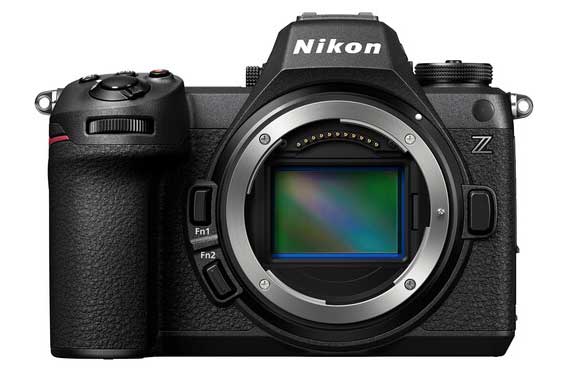
The Nikon Z6 Mark III camera has finally been announced! The camera features a newly developed 24-megapixel sensor with a readout speed of 10 milliseconds or less while recording 6K video footage, and approximately 6 milliseconds when shooting 4K videos up to 120 frames per second. Technically, such a fast readout speed is usually not possible in any camera of this price range, but that’s what you get with the Nikon Z6 Mark III.
Having a stacked CMOS sensor in a full-frame camera is not very useful if you have a slower continuous shooting speed. Here, they have used the latest Expeed 7 image processor paired with the stacked CMOS sensor. The overall readout speed is very fast and unbelievable for this price range. You are getting full-frame JPG images up to 60 frames per second with the help of the electronic shutter in the Nikon Z6 Mark III camera, and due to the faster readout speed of the sensor, you will notice less rolling shutter effect in your images. It is a class-leading wildlife photography camera available within this budget.
If you want to push further, the camera can shoot up to 120 frames per second in DX crop mode. At the same time, the readout speed of the sensor decreases more, resulting in a completely rolling shutter-free action in your images. If you want to capture RAW, the camera can shoot up to 20 frames per second and can save both RAW and JPEG without any issue.
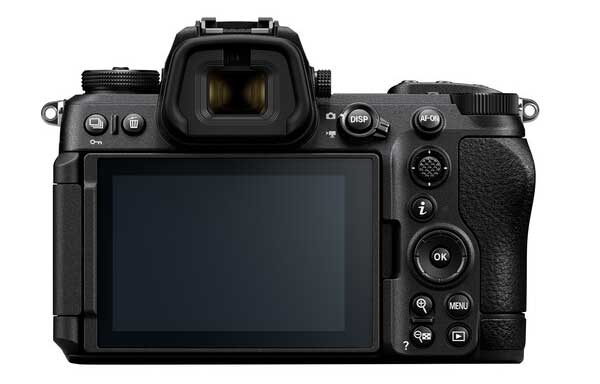
Having all these features, if your camera lacks in the sensor-shift stabilization area, then what’s the use of having a stacked sensor and faster continuous shooting speed? Fortunately, the Nikon Z6 Mark III camera uses the same sensor-shift image stabilization technology that we have seen in the Nikon ZF camera. The camera offers a complete 8 stops of sensor-shift image stabilization, and the IBIS is linked to the autofocus points of the sensor.
As you can see, it’s a perfect professional camera for photographers. You will not find any area where the camera has inferior specs.
The autofocus sensitivity of the camera is very similar to the ZF, which is a very good thing. You can use f/2.8 lenses, and the AF sensitivity works up to -10 EV, which is technically not possible with any other camera in its class and price range.
That said, it’s a perfect photography tool for any professional photographer under a reasonable price tag.
Let’s explore the videographic features of the camera. Finally, in the Nikon Z6 series, we are getting RAW and ProRes RAW video recording support. The camera can capture 6K videos up to 60 frames per second, and starting from 6K videos, all these frames and resolutions can be recorded in CF Express Type B cards in both RAW and ProRes format in 4:2:2 10-bit internal recording.
There is also a full-size HDMI port to get a neat and clean external recording option for professional cinematographers.
Additionally, you can capture 4K videos up to 120 frames per second, but in DX crop mode. With the help of the stacked sensor and Expeed 7 image processor, the camera can record 4K 60 FPS video oversampled from a 6K sensor, and there is no crop you have to face while recording. This is quite interesting since cameras like the Panasonic S5 IIX do have a 4K 60fps crop. Despite having no internal fan, the camera can shoot 4K 60 FPS videos uninterruptedly for up to 125 minutes under 25 degrees Celsius.
Overall, the video core specifications of the camera outperform other cameras in its price range.
Overall, it is one of the best Nikon cameras ever made in the $2000 price range, highly recommended for photographers as well as cinematographers.
Get Nikon Z6 Mark III Camera from B&H Store
Nikon Z6 Mark III Camera Press Release
Impressively versatile, capable and powerful: the new Nikon Z6III outperforms expectations, setting the new benchmark for its class
World’s First Partially-Stacked CMOS Sensor1 Gives Photographers & Filmmakers Flagship-Level Performance; Nikon Also Announces Nikon Imaging Cloud Online Service & Curated Image Recipes
MELVILLE, NY (June 17, 2024) – Today Nikon announced the Z6III, a 24.5MP full-frame mirrorless camera that stands in a class of its own with an unmatched suite of powerful features that bring exceptional performance to both photographers and filmmakers. The Z6III is the world’s first camera with a partially-stacked CMOS sensor, delivering ultra-fast readout that unlocks blistering speeds and high frame rates in both photo and video modes. Other benefits include a truly immersive viewfinder experience with the brightest EVF of any mirrorless camera,1 and a wide range of pro-level features inherited from Nikon’s acclaimed Z8 and Z9 flagship cameras.
The combination of the Z6III’s unique new sensor design and EXPEED 7 image processing engine results in an approximately 3.5x increase to readout speed compared to the previous-generation Z6II. This unlocks enhanced performance across the board, enabling benefits such as 6K internal N-RAW and ProRes RAW video, Full HD video up to 240p, and rapid continuous shooting of stills up to 120 fps with Pre-Release Capture. However, the camera’s incredible performance goes far beyond just frame rates. The Z6III features an impressively fast AF system inherited from the Z8 and Z9, which includes highly advanced multi-subject detection with the speed and accuracy needed for maximum confidence.
“Offering a camera with this level of performance, reliability and an appealing price is a winning formula for all kinds of users who need a camera that will help them excel in every job or creative endeavor,” said Naoki Onozato, President and CEO, Nikon Inc. “The Z6III represents much more than simply a generational update–it’s a major leap forward that’s going to establish a whole new concept of what a mid-range camera should be capable of.”
Outperform with unmatched features
- World’s first partially-stacked sensor: The Z6III is the first mirrorless camera to adopt this new sensor architecture, which features multiple high-speed processing circuits stacked in layers above and below the imaging area of the sensor. The high-speed readout made possible by this new sensor in combination with the same EXPEED 7 processing engine as the Z8 and Z9 enables a range of powerful features.
- Upgraded autofocus: AF is fast and accurate, clocking in at a full 20% faster than the Z6II. In challenging light, the AF detection range has been extended to an incredible −10 EV2, superior even to the flagship level cameras. This enhanced sensitivity makes it easier to focus in dark situations like nighttime sports or an event reception.
- Advanced subject detection: The Z6III draws on the advanced subject-detection technology of the Z8 and Z9 to automatically detect nine subject types, including people, animals and various vehicles. Users can lock onto these subjects with advanced AF modes including 3D-tracking, Auto-area AF, Wide-area AF and Dynamic-area AF. Custom wide-area AF patterns allows for the detection and tracking of subjects within a custom designated area.
- Pre-Release Capture up to 120 fps: This powerful feature enables photographers to capture shots that might have otherwise been missed, such as the moment a bird takes flight, a lightning strike or the game-winning goal. A half-press of the shutter-release button starts buffering images3, and when the shutter is pressed all the way, the Z6III saves images taken up to one second prior.
- Internal 6K RAW video: The Z6III is capable of capturing 12-bit 6K/60p N-RAW and 6K/30p ProRes RAW, as well as 10-bit 5.4K ProRes 422 and H.265 video formats. The ability to capture super high-resolution video footage affords filmmakers the freedom to crop, trim, track and stabilize a 4K timeline in post with ultimate clarity. Furthermore, filmmakers can take advantage of the Z6III’s maximum video resolution of 6K to create oversampled 4K UHD/60p video footage4. The Z6III’s efficient heat-dissipating design allows continuous 4K UHD/60p recording for up to 125 min.5
- Brightest EVF of any mirrorless camera: At up to 4,000 cd/m2 (nits), the Z6III’s 5,760k-dot electronic viewfinder is the brightest ever in a mirrorless camera, delivering a clear, detailed view even in extremely bright outdoor situations while minimizing viewfinder blackout. In addition to its class-leading brightness and high resolution, the Z6III’s EVF is the first in a mirrorless camera to support a DCI-P3 equivalent color gamut1, which enables photographers and filmmakers to see a more lifelike display of colors.
- Dynamic Full HD/240p slow motion: The Z6III can capture dramatic slow-motion footage up to 10× with 10-bit Full HD/240p H.265 video recording.
- Amazing low-light ability: The Z6III’s wide native ISO range is from 100-64,000 (51,200 in video) and is expandable to 204,800 for ultra-low-light shooting. The Z6III’s EXPEED 7 image processing engine enables tailored noise reduction, effectively minimizing grainy noise in flat areas of the image while preserving fine details in subjects such as buildings. This results in sharper, clearer images in low-light environments.
- 8.0 stop Vibration Reduction6: Built-in 5-axis image stabilization delivers up to 8.0 stops of Vibration Reduction, empowering photographers and filmmakers to shoot handheld with confidence. Enjoy the creative freedom of slower shutter speeds, while keeping subjects sharp and using lower ISOs. Additionally, the Z6III features Focus Point VR7, which prioritizes stabilization on the active focus point.
- Vari-angle LCD screen: The 3.2” rear LCD touchscreen can be used as a front-facing screen for video production and self-recording, as well as framing at a low angle.
- High-resolution Pixel Shift mode: In Pixel-shift mode, the Z6III’s sensor is subtly shifted across 4, 8, 16, or 32 exposures, for increased color and detail with an incredibly high resolution of up to approx. 96MP.8
- Z8-level build quality: The Z6III is constructed from magnesium alloy and Sereebo® material for maximum durability and light weight. Weighing only 1.67 lbs. with a battery and memory card, the Z6III is sealed against dust and moisture to the same level as the Z8, and is rated for operation down to 14°F/−10°C, making it suitable for use in a wide variety of environments and conditions.
- Flexible Color Picture Controls: The Z6III supports the new Flexible Color Picture Control feature in NX Studio.9 Z6III owners can use the software’s powerful Color Blender and Color Grading features to create custom presets that can be uploaded to the camera as Custom Picture Controls.
New Nikon Imaging Cloud
Nikon Imaging Cloud10 will be a new complimentary cloud service that expands connectivity and creative options for Z6III owners.11 Users will be able to browse a suite of curated Imaging Recipes courtesy of Nikon and selected creators, which provide all the ingredients necessary to create amazing images: Suggested camera settings, inspiring insights plus Cloud Picture Control presets that Z6III owners can download straight to their camera. Furthermore, when the Z6III is connected to Nikon Imaging Cloud via Wi-Fi, still images captured with the camera can be automatically uploaded to a range of popular cloud storage services including NIKON IMAGE SPACE, making the storage and sharing of images even more convenient. In addition, Z6III owners will be able to use Nikon Imaging Cloud to keep their camera’s firmware up to date automatically over Wi-Fi, avoiding the need to manually download and install via a memory card.12
New MB-N14 Power Battery Pack
The MB-N14 (release scheduled for Summer 2024) is an optional power battery pack with an integrated shutter button for the Z6III, Z7II and Z6II. The MB-N14 can hold two EN-EL15c13 rechargeable Li-ion batteries, allowing users to record approximately 1.9× more stills and extend video shoots.14 In addition to offering the same dust and drip resistance as the Z6III, the MB-N14 can also be used in conditions as cold as −10°C/14°F, making it extremely useful when shooting for extended periods of time in harsh conditions. What’s more, the MB-N14 is a “hot swap” power battery pack that continues to supply power even when one of the two batteries is removed. A built-in USB connector enables batteries inserted in the MB-N14 to be charged even when the MB-N14 is not attached to the camera.15
Price and Availability
The new Nikon Z6III will be available in late June for a suggested retail price of $2,499.95* in the body-only configuration, or with the NIKKOR Z 24-70mm f/4 lens for $3,099.95.* The MB-N14 power battery pack will be available this summer for a suggested retail price of $359.95
By admin, on June 17th, 2024
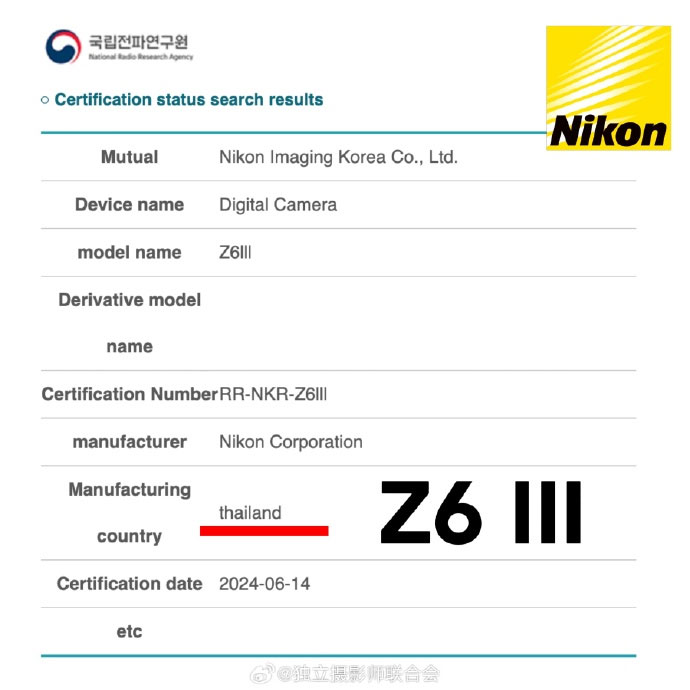
Nikon Z6 Mark III camera registration details surfaced over the web, as you can see in the registration the Nikon Z6 Mark III camera is made in Thailand. The Announcement of the camera is about to happen today and the pre-order links will also become active
Nikon Z6 Mark III – B&H Store
All about Nikon Z6 Mark III here
Also see – Nikon’s Lens Empire Expands: Sendai Factory’s Mega Investment!
Follow us on our social pages FACEBOOK | TWITTER | INSTAGRAM to get live news + Nikon Rumors 24X7.
By admin, on June 15th, 2024

Nikon China has officially published the first image of the Nikon Z6 III camera. We are just one step away from the official announcement. The body’s build looks amazing and very similar to the Nikon professional Z8 camera.
Nikon Z6 Mark III Pre-oder at B&H Store
Also see – Nikon’s Lens Empire Expands: Sendai Factory’s Mega Investment!
Follow us on our social pages FACEBOOK | TWITTER | INSTAGRAM to get live news + Nikon Rumors 24X7.
By admin, on June 15th, 2024
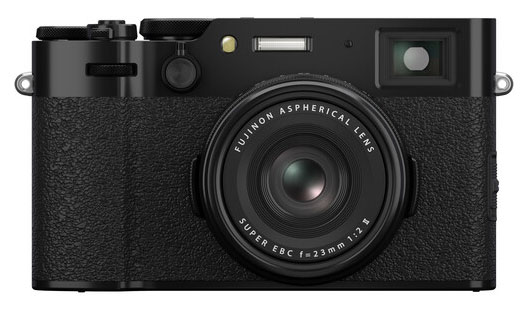
Recently, Map Time released the statistical data for the sales period of May 2024, and even in this month’s datasheet, you can find the Fuji X100 VI camera topping the charts again. This is not the first time; since the end of March, the Fuji X100 VI camera sales have been high in Japan, and consecutively for the past 3 months, the Fuji X100 VI has become the most-sold camera in Japan.
Fuji X100 VI camera at B&H Store | Amazon.com
MAP Camera Ranking May 2024
1st place: Fujifilm X100VI
2nd place: Sony α7IV
3rd place: Nikon Z f
4th place: Sony α7C II
5th place: Sony α7RV
6th place: Fujifilm X-T5
7th place: Sony ZV-E10
8th place: Canon EOS R6 Mark II
9th place: Nikon Z 8
10th place: Canon PowerShot SX740 HS
Follow us on our social pages FACEBOOK | TWITTER | INSTAGRAM, –> See More Fuji Rumors Or subscribe to us via Email
By admin, on June 14th, 2024

Let’s see the big surprise, but somehow we were expecting some sort of move from these third-party lens makers since they were completely silent on Canon Fullframe Lenses release.
According to Yamaki-san, the goal is to launch all of their current APS-C lenses in RF mount by the end of this year. Moreover, he added that they currently don’t have a plan to release full-frame RF mount autofocus lenses, but “they will do their best” to meet customers’ needs.
They Don’t have a plan or they are not allowed by Canon to do so, the big problem is they are not allowed to make full-frame lenses yet, Since, Canon feels that their full-frame lineup is well-stocked at this moment and doesn’t need further or additional support from any third-party maker.
Another big issue is that if Canon allowed third-party lens makers to create full-frame lenses, there would be huge price competition that Canon would have to face. These third-party lens makers would likely drop some of the best budget constant-aperture zoom lenses they already have for the Nikon Z mount as well as the Sony E mount, which would likely diminish the sales of Canon’s premium L series lenses that cost two to three times more than these third-party lenses.
I am not questioning the quality, but they do give you budget options, especially Sigma Art lenses that come at an affordable price and offer great optical quality without a doubt.
This move by Canon is certainly going to disappoint a lot of Canon full-frame camera users out there, especially those who have purchased Canon R series cameras at a super budget price. Now they have to pay a premium price, otherwise, they have no option left but to get a DSLR lens with an adapter or choose pricey Canon full-frame lenses.
Get LIVE RUMORS –> FACEBOOK | TWITTER | INSTAGRAM to get live news + Canon rumors 24X7
via CR.com
By admin, on June 14th, 2024
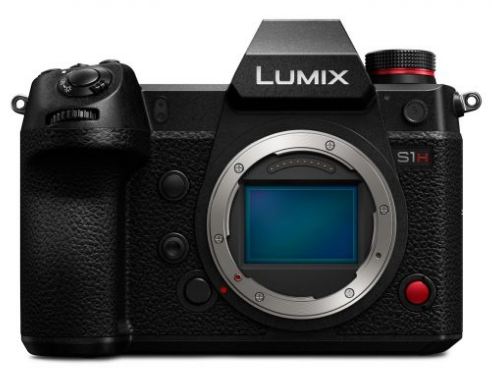
According to the latest rumors surfaced over the web, after the Pansonic GH7 update now Panasonic will revive the “S” series of full-frame cameras. The Panasonic S1H Mark II is said to be one of the announcement pipelines, expected to arrive in Q4 of 2024. published on June 9, 2024
We have published this post back on June 9, 2024. Now the same information appears on camera-beta (webio). So, either they have their source of just they are copying us I am not able to tell this, but since their post have no mentions or credits to anyone we are considering it as a fresh piece of information that exactly resembles the info we have shared a while ago.
information shared by Camera beta today – June 14, 2024
Panasonic Lumix S1H II may be released in the fourth quarter – According to the latest information, after the release of Panasonic GH7, the next update will be for the S series full-frame camera bodies. According to previous rumors, Lumix S1H II is among them, and it is expected to be officially released within this year (fourth quarter).
Follow us on our social pages FACEBOOK | TWITTER | INSTAGRAM, to get LIVE News and Panasonic Rumor
source camerabeta
|
KEEP THIS BLOG ALIVE - Support New Camera Buy Canon Lenses, Buy Music CD or Digital Camera at amazon it helps this site, and you do not pay anything extra, it is just a way to help support this site.

|




















